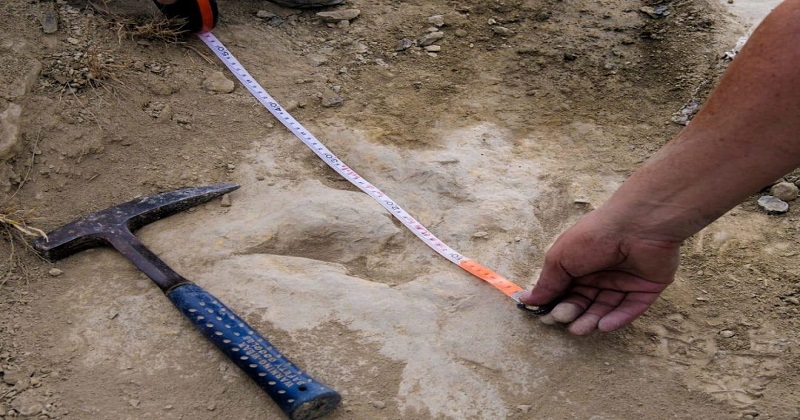
Humans have always been fascinated by the study of ancient life because we are all inquisitive about how our planet appeared centuries ago, how creatures evolved with time and other information concerning prehistoric flora and fauna.
Scientists have analyzed fossil data to disclose new features and researchers around the world are continuing to dig deeper to learn more about the history of fossils. A study recently revealed that some early Cretaceous theropod dinosaurs could sprint at high speeds, possibly as fast as Usain Bolt.
According to a study published in the journal Scientific Reports on Thursday, some theropod species can reach speeds of up to 28 mph. They’d be the quickest dinosaurs ever based on their speed.
A team of scientists from the Universidad de La Rioja examined a fossilised trackway discovered in Igea, Spain, to determine how fast theropods could run and what sort of movement they displayed. The impressions were left by two individuals from an unnamed theropod species from the Igea site, designated La Torre 6A-14 and 6B-1.
The dinosaur with the largest set of footprints were sprinting between 14.5mph and 23.1mph, according to the experts, and La Torre 6A-14 prints were larger than the creature that made 6B-1. The Torre 6B-1, on the other hand, is said to have a top speed of 19.7 mph and a top speed of 27.7 mph.
It is worth noting that in a 100-meter race in 2011, Jamaican sprinter Usain Bolt raced up to 27.3 miles per hour.
‘Theropod behaviour and biodynamics are intriguing questions that palaeontology has been trying to resolve for a long time’, a part of the abstract of the study read.
Also Read: 70-million-year-old dinosaur species with ‘battle axe’ tail discovered in Chile
‘The lack of extant groups with similar bipedalism has made it hard to answer some of the questions on the matter. Theoretical biomechanical models have shed some light on the question of how fast theropods could run’, it further added.
Due to the nature of tracks as a consequence of these creatures’ interactions with the environment, studying dinosaur footprints can help address some of these concerns.
Theropods were two-legged dinosaurs that were commonly classified as saurischians. Although later investigations demonstrated that a number of theropod groups evolved to become herbivores, omnivores, piscivores, and insectivores, they were originally carnivorous. Hollow bones and three-toed limbs distinguish theropods.

Post Your Comments